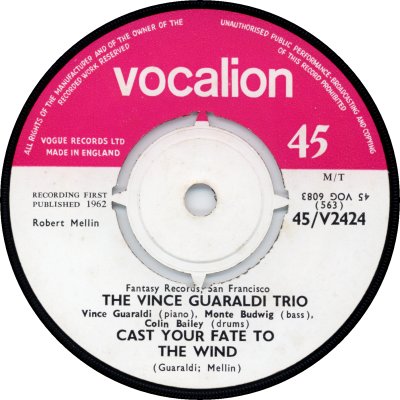
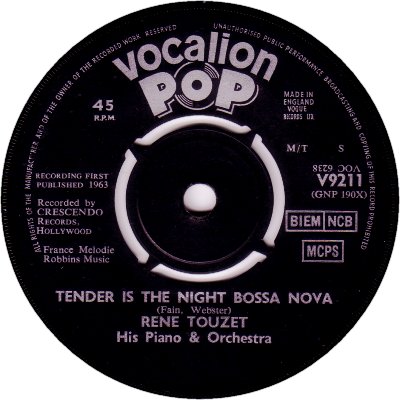
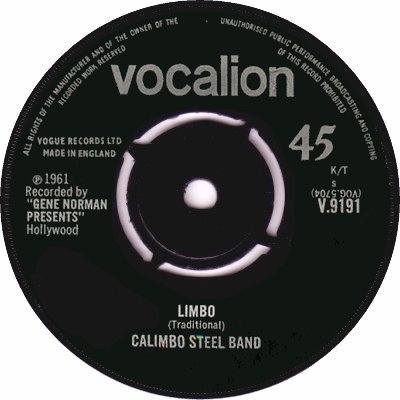
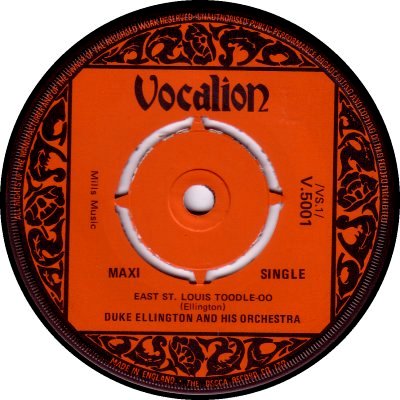
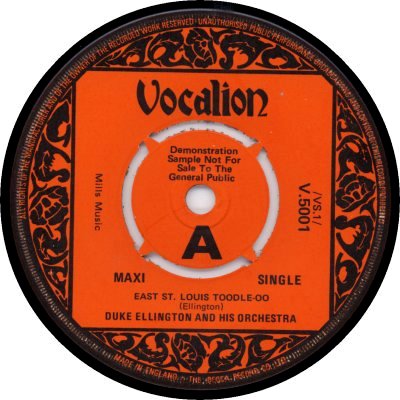
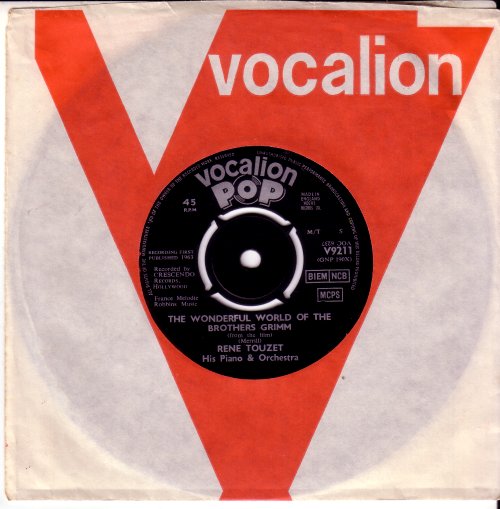
As the look of the '70s version (4) suggests, Vocalion as a label goes back to the 78rpm era. It first saw the light of day in 1916 as the record division of the Aeolian Piano Company, of New York. In 1925 it became part of Brunswick, moving on with that company to join the American Record Corporation in 1931. In 1938 it became a subsidiary of Columbia, but it was discontinued in 1940. The U.S. branch of Decca revived Vocalion in the '50s as a budget reissue label. Here in Britain, the Vocalion label was brought back to life by Decca in 1962. Until that time Decca had issued records on the Vogue label via an agreement with the British branch of Disques Vogue; in that year however the Vogue trademark reverted to its French owner and Decca was no longer entitled to use it. Vocalion was used as a replacement, and took over most of the old Vogue numerical series. It seems to have been used mainly as a vehicle for licensed records; its final EP appears to have been issued c.1965 and it expired altogether c.1968. As I say, the catalogue numbers were the continuations of those which had been used by Vogue. The main popular series was in the V-9000s, with the Vocalions starting in the early 9200s. From March 1964 a suffix to the 'V' began to be used; it denoted which companies the records were licensed from. VLs were sourced from the Vault / Fat Fish and Venus labels, of Los Angeles; VHs from Hi-Fi of Hollywood; VFs from Fantasy / Galaxy / Scorpio, of San Francisco; VPs from Duke / Back Beat / Peacock, of Houston; and VNs from Crescendo / GNP Crescendo, of Hollywood. Jazz and Blues singles continued Vogue's V-2000 series; EPs in those styles took over the EPV-1000 series. Again there was the occasional added single-letter suffix, as described above. Vogue's all-purpose EP series, VE-170000, also continued to be used for Vocalion releases, sometimes with a suffix. The Jazz / Blues releases had a pink-and-white label (1), while Popular singles had a silver-on-grey label with 'Vocalion Pop' at the top (2); the 'Pop' was dropped in or around April 1965 (3) - thanks to Klepsie of the 45cat site for the use of her scan here (it is of a reissue, which accounts for the low catalogue number). Popular EPs had blue-and-white labels in the same design as the Jazz / Blues one. A few of the better-selling Vocalion LPs remained on the Decca catalogue until at least 1973. Vocalion resurfaced briefly during the 1970s as part of the Decca group, reissuing material from its glory days; only one 7" appeared, a Various Artists EP featuring Duke Ellington's 'East St. Louis Toodle-oo', 'Making Faces At The Moon' by The Boswell Sisters, and Benny Goodman's 'How Come You Do Me Like You Do' (V-5001; 2/76). For these issues the design reverted to the classic one used on 78rpm records (4, 5). The label was reborn again in the CD era, when Dutton Laboratories began using it as an outlet for cleaned-up music from the '20s, '30s and '40s. It still survives in that form today (2006). Distribution in the '60s and '70s was by Selecta, as it was for all Decca products.


Copyright 2006 Robert Lyons.

